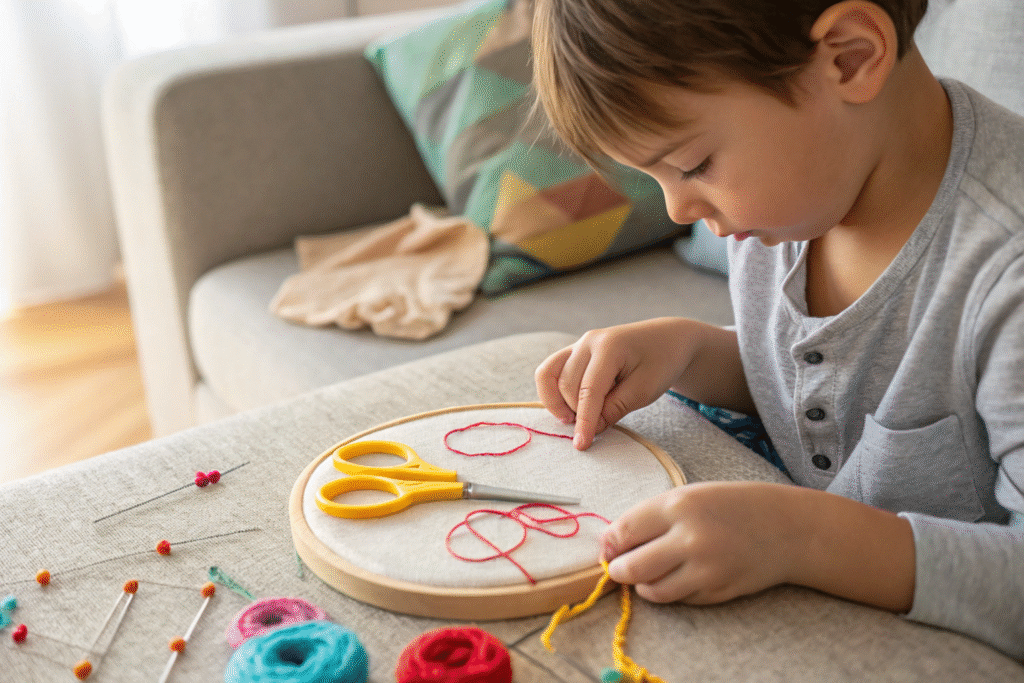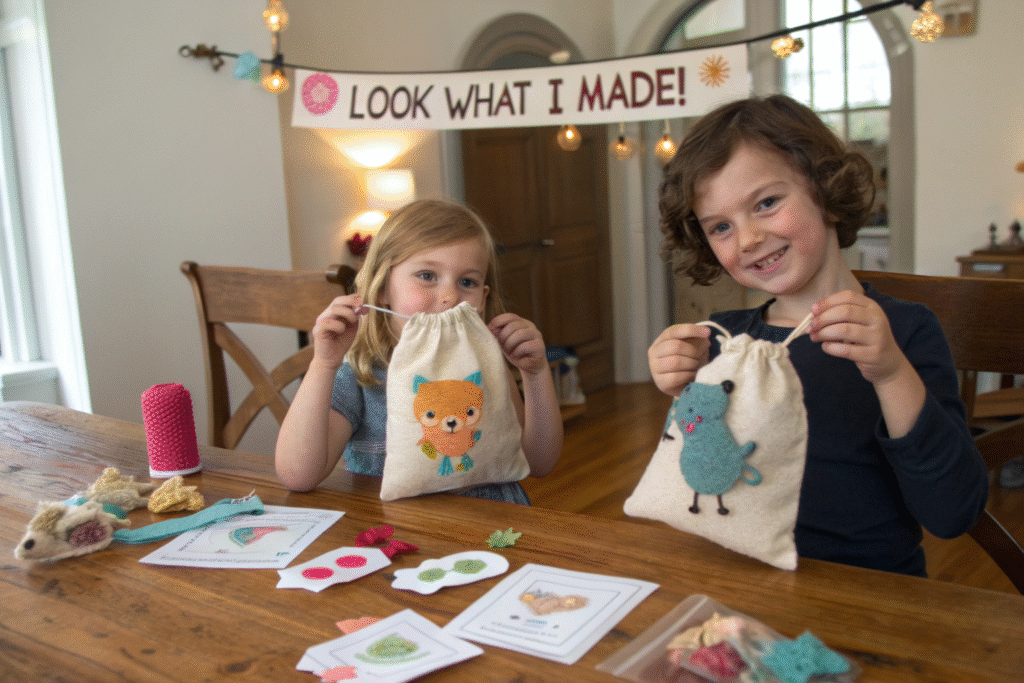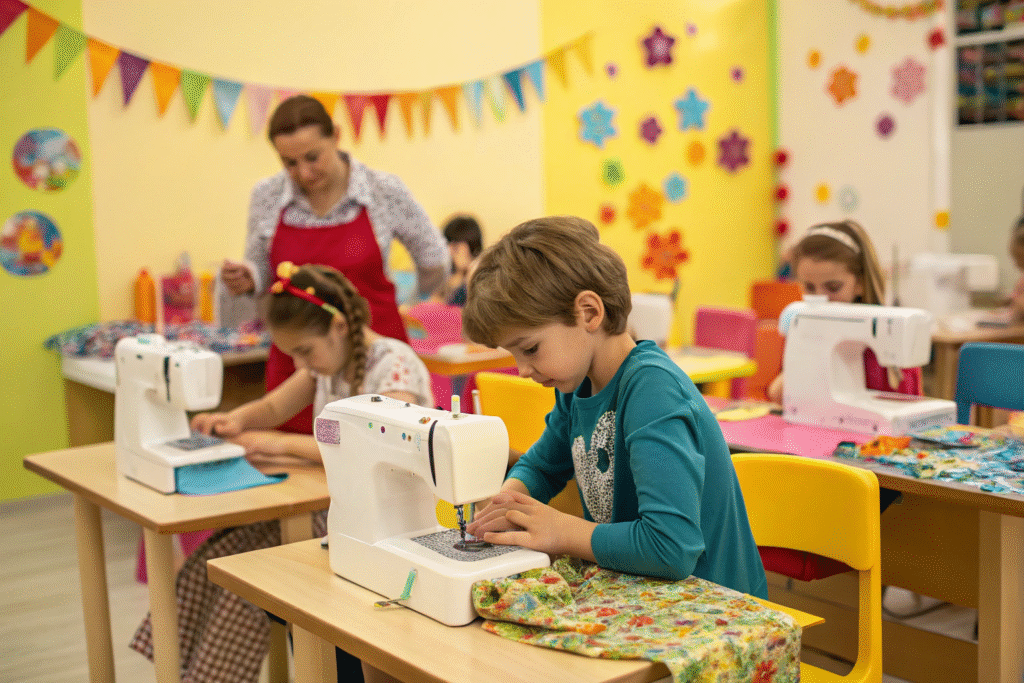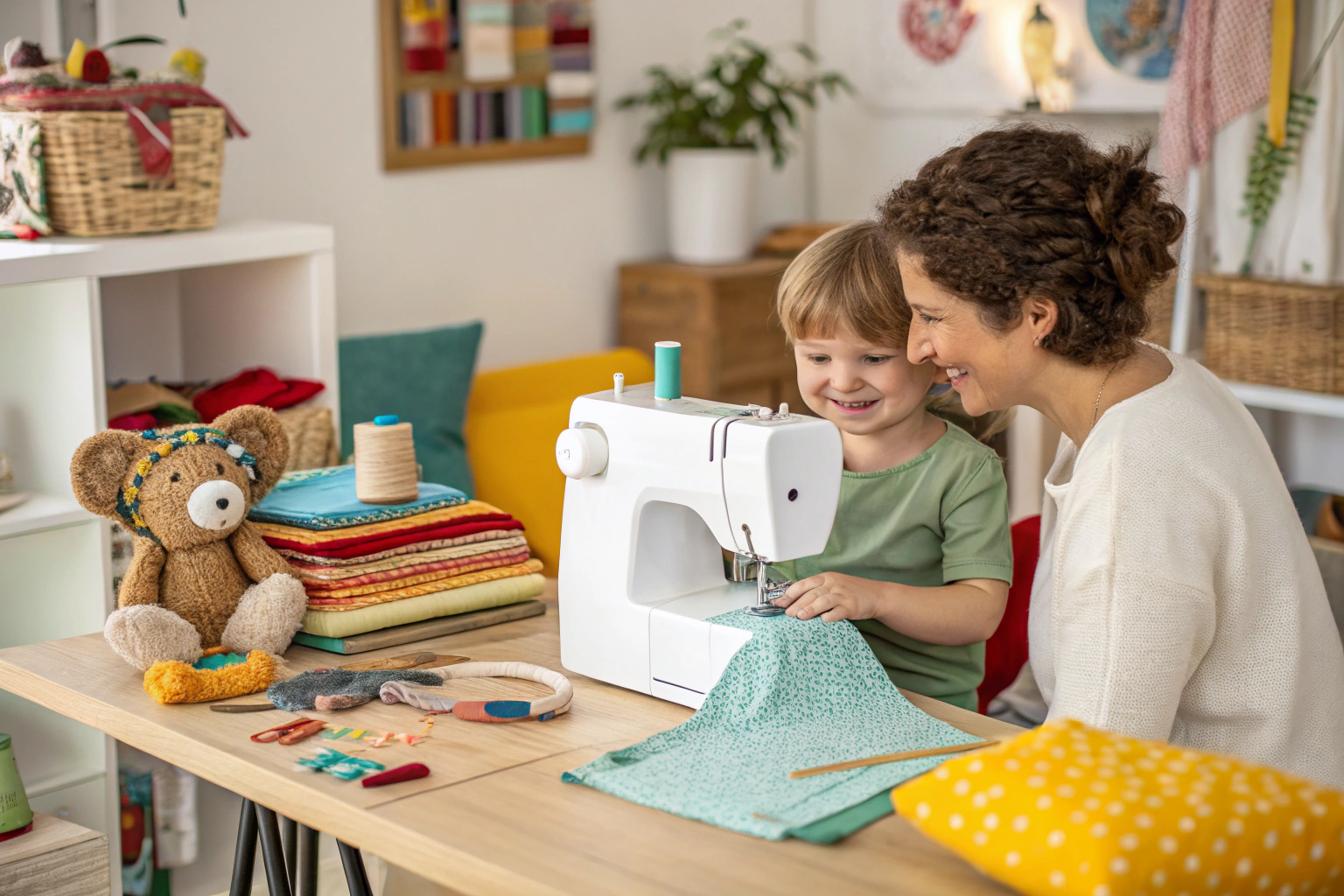Kids are naturally creative—but sewing can look intimidating with all its tools, needles, and patterns. The secret to helping children love sewing? Keep it fun, safe, and success-driven from the start.
The best way to encourage a child to love sewing is to start with simple, age-appropriate projects, use colorful tools and fabrics, and celebrate every creative result—regardless of perfection. Make sewing feel like play, not pressure.
As someone who’s run workshops and helped design children’s apparel, I’ve seen firsthand how the right approach can spark a lifelong passion. Here’s how you can nurture that love step by step.
What kind of tools are best for beginners?
Throwing a child onto a full-size sewing machine is a recipe for frustration. Instead, offer tools that match their motor skills and confidence level.
Beginner-friendly tools like plastic needles, felt sheets, child-safe scissors, and starter sewing machines help kids explore sewing safely and successfully.

Great starter tools:
| Tool | Why It Works |
|---|---|
| Plastic needles | No pricks, great for yarn work |
| Large-eye blunt needles | Help with threading practice |
| Child-safe scissors | Easy grip and low blade strength |
| Mini sewing machines | Speed control + safety features |
| Pre-cut felt shapes | Removes design complexity |
Tip: Use bright thread colors so kids can see their progress clearly.
Which projects keep kids excited?
Not all projects are equal—early wins matter. Complex garments will overwhelm a beginner, but stuffed toys, bags, and patches feel doable and rewarding.
The best sewing projects for kids are quick, hands-on, and show clear results—like felt animals, fabric bookmarks, or drawstring pouches. These boost confidence and creativity.

Easy project ideas:
- Felt plushies with hand stitching
- No-zipper tote bags
- Custom patches or name labels
- Hair accessories like bows or scrunchies
- Holiday ornaments
Let kids pick fabric patterns they love—characters, animals, or sparkles make it personal.
How can I make sewing feel like play?
Kids love play—and sewing becomes magical when it’s part of playtime, not a lesson. Treat it like crafts, not homework.
You can turn sewing into play by mixing it with storytelling, pretend play (like making doll outfits), rewards for trying, and gamified challenges like “design your own superhero cape.”

Creative play ideas:
- Let them “design” clothes for their toys
- Create sewing badges for every new skill
- Play “fashion designer” with sketch templates
- Use sticker charts for practice milestones
Celebrate mistakes too—laugh, fix it together, and move on. That’s part of learning.
Should sewing be taught at home or in groups?
Both home and group environments work—what matters is energy, encouragement, and variety. Some kids thrive on solo projects with a parent, while others enjoy peer learning and showing off their creations.
Group sewing classes add fun, teamwork, and inspiration, while home sewing offers comfort, bonding, and personalization. The best setup is one that your child responds to emotionally and creatively.

Pros of each approach:
| Setting | Benefits |
|---|---|
| Home | Flexible pace, one-on-one bonding |
| Group class | Social fun, friendly competition |
| Camps/workshops | Variety of tools and mentors |
If possible, blend both—a weekly class plus weekend home sessions reinforce skills and passion.
Conclusion
Helping a child fall in love with sewing isn’t about perfection—it’s about joy, creativity, and confidence. Choose tools that fit their hands, projects that spark pride, and a space that celebrates their effort. I’ve seen kids who couldn’t thread a needle become mini designers within months—because someone believed in them and made sewing fun. If you guide them gently, the love will follow stitch by stitch.










